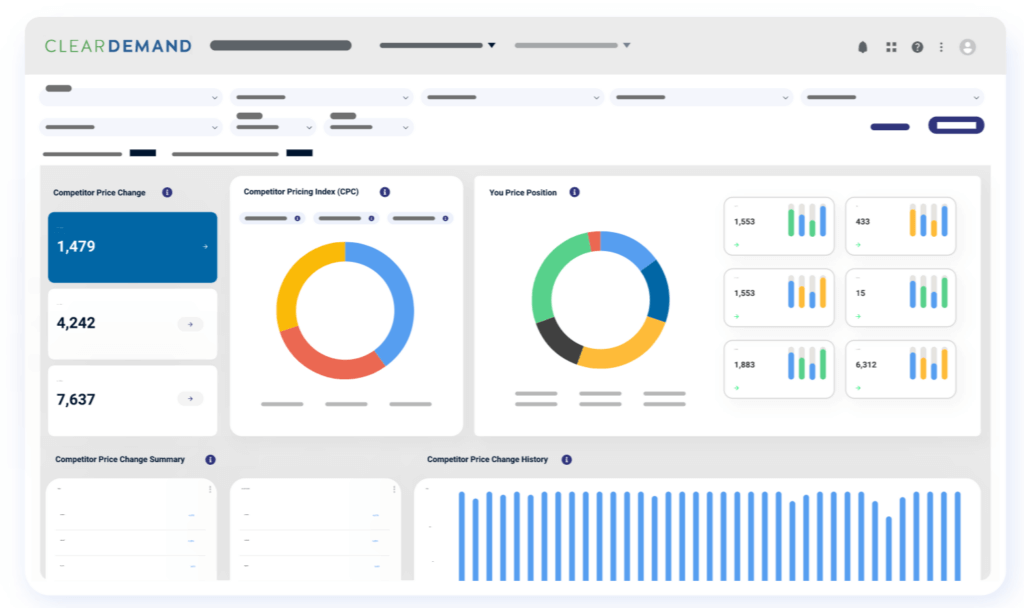A New Year, A New Start: Transforming Retail Pricing for Regional Retailers
Reading Time: 9 Minutes
This article also appears in Retail Technology Review.
As the new year begins, it’s the perfect time for reflection and renewal. For regional retailers – especially grocers – this is the time to reimagine strategies and embrace new tools to thrive in a competitive market.
Every inch matters regarding revenue, profit, and market share in today’s landscape.
Price is a critical driver but a balancing act, juggling customer loyalty, competitive pressures, and profitability.
Many retailers still rely on outdated methods like spreadsheets, siloed strategies, and manual processes to set prices. These fragmented approaches create inefficiencies and lead to costly mistakes. The new year brings an opportunity to resolve persistent challenges like mispriced items, reactionary pricing, and pricing uncertainty. These issues aren’t merely operational annoyances – they undermine customer trust, profitability, and growth.
To tackle these problems, retailers need more than instinct, ad hoc tactics, or grit. While those attributes may have worked in the past, they don’t hold up our rapidly shifting market. Today, retailers require a cohesive pricing strategy powered by modern, strategic tools that support data-driven decisions.
So, why not make a pricing makeover part of your 2025 resolutions?
Resolve to Create a Cohesive Pricing Strategy
Disjointed pricing approaches create inefficiencies that weigh down operations, alienate customers, and diminish your brand. Conversely, the opposite provides lasting benefits and customer trust – Walmart and Amazon are the prominent Everyday Low Priced (EDLP) retailers, and shoppers know that.
Establishing a cohesive pricing strategy is your first step.
Define target customers, identify primary competitors, assign category roles, and specify key value items (KVIs). Pricing tactics should execute against the category role. Traffic drivers can be heavily promoted and include loss leader items with more aggressive pricing to attract customers.
In contrast, convenience categories typically feature items with higher profit margins. However, even within a category, retailers should account for variations in KVIs and subcategories. Otherwise, they risk overly discounting some items and overpricing others, causing them to lose profits and customers.

Embrace Modern Solutions
The ideal strategic pricing solution provides enterprise-grade sophistication without the complexity.
Retailers can regain pricing control by automating rules, streamlining price optimization, and outmaneuvering competitors.
Critical functionality you should consider:
A Robust Rules Engine
- Flexible but precise rules that easily adapt to your unique assortment, whether it’s managing pricing for your entire store or tailoring your pricing for an individual price zone.
- Create and manage global rules, store groupings, individual store-specific rules, any rules differentiation by brand and item. This level of granularity ensures your pricing strategy perfectly aligns with your business objectives.
- Prioritize rules and competitors during price optimization, maintaining complete visibility into how your rules impact key metrics such as revenue and profit.
- See the cost of compliance with your rules regarding revenue and profits and evaluate if softening the rule will improve overall results.
Optimization with Proven Demand Modelling
- No more guessing. Sales histories are utilized to calculate the elasticity of demand for every item, recommending prices to maximize impacts and find that sweet spot between max revenue and profit. Whether it’s a new promotion or responding to a competitor, these insights keep retailers ahead of the game.
- Perfect data cannot be expected to yield results. The solution must be able to infer out-of-stocks without compromising elasticity calculations. It must also use AI techniques to improve model accuracy, compensating for missing data and data anomalies while evaluating multiple leading indicators on demand, such as the weather and other prominent events.
- Prices and promotions optimization decisions can no longer be done in silos. Only by looking at the two together can retailers fully optimize your prices.
A Streamlined Approach to Efficiency
- Automation reduces common pricing headaches – no more mispriced items or delayed cost-change reflections. With the right pricing solution, retailers have more bandwidth to focus on the most impactful decisions while eliminating reactive decision-making.
Overcoming the Fear of Change
Kicking off a new year brings excitement for change, but also apprehension. Don’t worry about disrupting your routines or learning new systems. The cost of staying the same outweighs the effort of moving forward. A retail pricing provider eases your transition by supporting you with change management resources, so that you adapt smoothly and confidently to best-in-class pricing practices.
Overcome change by finding opportunities for improvement by starting small and thinking big.
- Starting small: Focus on optimizing high-impact categories for quick and measurable returns.
- Thinking big: Establish the foundation for a unified, data-driven pricing strategy that benefits the entire organization.
A Fresh Start for Retailers
Consider pricing transformation more than just a resolution – it’s an opportunity to shape a profitable future.
Find a price engine with customizable rules, advanced automation, and price optimization to remove uncertainty from pricing and turn it into a competitive advantage.
Read the Full Article in Retail Technology Review here.
The Latest Insights – Straight to Your Inbox
Sign up for the ClearDemand mailing list for actionable strategies, upcoming events, industry trends, and company news.













